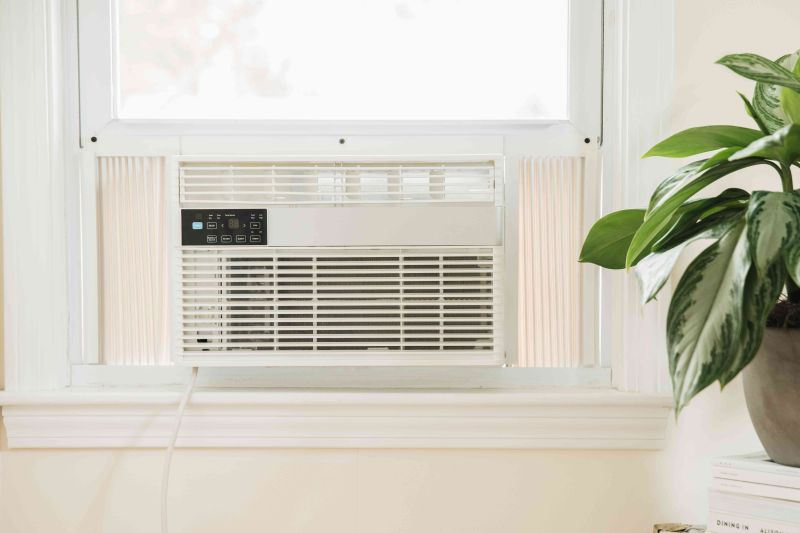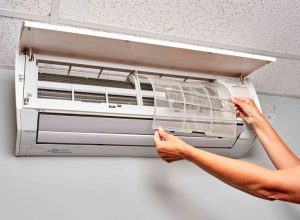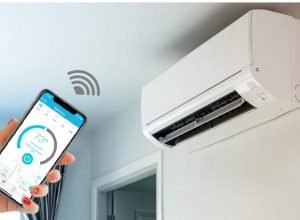Contents
Understanding Air Conditioner Sizing
Choosing the right size air conditioner for your space is crucial for effective heating and cooling. An appropriately sized unit will operate efficiently, maintain a comfortable indoor climate, and save energy costs. An undersized air conditioning unit struggles to meet the desired temperature, leading to increased wear and tear, higher energy bills, and potential unit failure. Conversely, an oversized unit may cool the space too quickly, causing inadequate humidity control and resulting in a clammy indoor environment. In this article, we will delve into the factors that influence the sizing process, the methods used to calculate the required cooling capacity, and the implications of both undersizing and oversizing an air conditioning unit.
Factors Influencing Air Conditioner Sizing
Several key factors determine the appropriate size of an air conditioning system for a given space:
- Square Footage: The size of the area you intend to cool is the primary consideration. Typically, air conditioning requirements are expressed in British Thermal Units (BTUs) per hour, with various guidelines showing the required BTUs based on the square footage.
- Ceiling Height: Standard calculations are based on an 8-foot ceiling. For ceilings higher than this, additional BTUs need to be accounted for. A higher ceiling increases the volume of air that needs to be cooled.
- Insulation Quality: Well-insulated spaces retain cool air more efficiently. Poor insulation increases the cooling load, as the system has to work harder to maintain comfortable temperatures.
- Sunlight Exposure: The amount of sunlight entering a space can dramatically affect cooling needs. Rooms with large windows that face south or west may require additional BTUs to counteract solar heat gain, while shaded spaces may require less.
- Occupancy: More occupants generate additional heat. For example, each person can add approximately 400 BTUs of heat. Therefore, larger families or regular gatherings increase the cooling requirement.
- Appliances and Electronics: Common household appliances and electronics can contribute significant heat loads. For instance, kitchens often require more cooling capacity due to the heat generated from ovens and stoves.
Methods for Calculating Cooling Capacity
Professionals often use two main methods to calculate cooling capacity:
- Manual J Calculations: This is a comprehensive analysis that takes all the factors mentioned above into account. It assesses not only the square footage but also the specific attributes of your home like insulation, orientation, and layout.
- Rule of Thumb Method: Although less precise, a common guideline suggests using 20 BTUs per square foot of living space. While this is a quick estimate, it doesn’t accommodate for the myriad of factors influencing cooling needs.
Implications of Incorrect Sizing
The effects of improper air conditioner sizing can have long-term ramifications on both performance and comfort:
| Condition | Implication |
|---|---|
| Undersized AC | Increased energy consumption, higher utility bills, insufficient cooling, and potential breakdowns. |
| Oversized AC | Frequent cycling, high humidity levels, reduced air quality, and inadequate air distribution. |
In summary, accurately sizing an air conditioning unit is vital for efficiency, comfort, and cost-effectiveness. Engaging a qualified HVAC professional to conduct a Manual J calculation can ensure you invest in a system that meets your specific cooling requirements, ultimately enhancing your indoor environment.
Factors Influencing Air Conditioner Size
Several factors must be considered when determining the size of an air conditioning unit:
- Square Footage: The total area of the space to be cooled is a primary factor in determining the size of the air conditioner. Typically, a rule of thumb is that 20 British thermal units (BTUs) are needed for every square foot of space.
- Ceiling Height: Spaces with higher ceilings may require additional cooling capacity because the air volume that needs to be cooled is greater than that of standard ceiling heights.
- Insulation Quality: Well-insulated spaces retain cooler air better than poorly insulated areas. The R-value of insulation materials should be assessed.
- Sun Exposure: Rooms that receive direct sunlight for a significant portion of the day may require additional cooling power. Factors include window size and orientation.
- Occupancy: More occupants generate additional heat. For each additional person beyond the first two, add around 600 BTUs to the required capacity.
- Heat-Generating Appliances: Kitchens or areas with numerous electronic devices can also lead to increased heat loads.
Methods for Calculating Air Conditioner Size
The following methods can be used to calculate the required capacity for air conditioning:
Manual J Calculation
One of the most accurate methods for determining the size of an air conditioner is the Manual J calculation, developed by the Air Conditioning Contractors of America (ACCA). This method accounts for all the factors mentioned above and provides the required BTU measurements for specific spaces.
Simple BTU Estimation
For those looking for a simpler approach, you can use a basic BTU estimation. Here is a general guideline based on square footage:
| Square Footage | BTUs Needed |
|---|---|
| 300 – 350 | 7,000 |
| 350 – 400 | 8,000 |
| 400 – 450 | 9,000 |
| 450 – 550 | 10,000 |
| 550 – 700 | 12,000 |
| 700 – 1,000 | 14,000 – 18,000 |
Implications of Undersizing and Oversizing
Choosing the wrong size air conditioner can have significant consequences:
Undersizing
An undersized air conditioner will struggle to cool the space adequately, leading to longer running times and increased wear and tear. This can ultimately result in higher energy bills and may necessitate sooner replacement.
Oversizing
Conversely, an oversized unit will cool the space too quickly, failing to run long enough to dehumidify effectively. This can create a clammy environment and contribute to mold and mildew growth. Additional costs arise from the initial purchase, installation, and decreased energy efficiency.
Conclusion
Effectively sizing an air conditioner requires a detailed understanding of your space, its characteristics, and the cooling needs you will encounter. Utilizing the Manual J calculation or simple BTU estimation methods can guide you to make the best selection for optimal comfort and efficiency. Remember, air conditioning is not just about cooling but also about creating a healthy and comfortable indoor environment.






